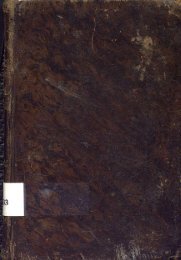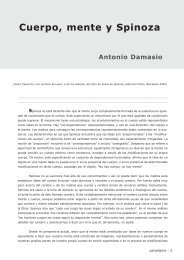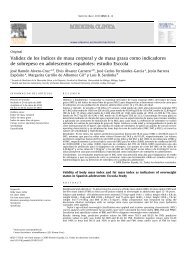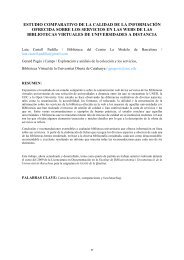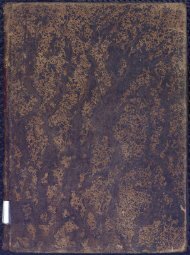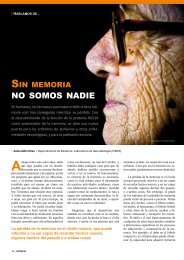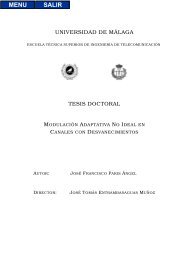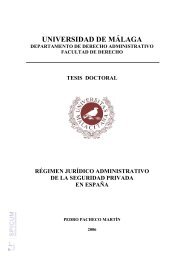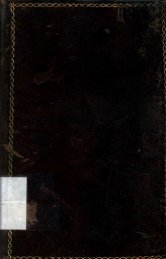Papel de las actividades superóxido dismutasa y catalasa en la ...
Papel de las actividades superóxido dismutasa y catalasa en la ...
Papel de las actividades superóxido dismutasa y catalasa en la ...
Create successful ePaper yourself
Turn your PDF publications into a flip-book with our unique Google optimized e-Paper software.
acterial diversity only the dominant microbiota (i.e. popu<strong>la</strong>tions with re<strong>la</strong>tive<br />
abundances of > 1%) will be visualized on the DGGE gels [64].<br />
Simi<strong>la</strong>r to the situation <strong>de</strong>scribed by several authors in homeotherms [64, 65],<br />
each individual fish showed a unique DGGE pattern. As expected, the fish intestinal<br />
microbiota fluctuates over time and is more <strong>de</strong>p<strong>en</strong><strong>de</strong>nt on the <strong>en</strong>vironm<strong>en</strong>t than<br />
homeothers [8].<br />
In our study, the only significant change in the intestinal microbiota could be<br />
observed in intergroup comparisons after comparing fish from the control group with<br />
fish fed with strain Pdp13. This might partly be exp<strong>la</strong>ined by the fact that closely re<strong>la</strong>ted<br />
popu<strong>la</strong>tions were already installed in the tissue, as corresponding bands were also<br />
observed in control groups. This is in accordance with the i<strong>de</strong>a that the microbiota of<br />
fish intestine consists of bacteria that are also pres<strong>en</strong>t in the surrounding water, but<br />
which are able to persist and multiply in the <strong>en</strong>vironm<strong>en</strong>t provi<strong>de</strong>d by intestinal tract<br />
[66, 67]. Therefore, the gastrointestinal microbiota of fish and shellfish are peculiarly<br />
<strong>de</strong>p<strong>en</strong><strong>de</strong>nt on the external <strong>en</strong>vironm<strong>en</strong>t, Vibrio being one of the most abundant g<strong>en</strong>era in<br />
marine fish [55]. The probiotics were iso<strong>la</strong>ted from the skin of another farmed fish,<br />
gilthead seabream. It can be expected that simi<strong>la</strong>r microbiota colonize both hosts.<br />
Further studies using direct sequ<strong>en</strong>cing of excised bands and 16S rRNA g<strong>en</strong>e clone<br />
library analysis need to be carried out to confirm that these bands correspond to<br />
popu<strong>la</strong>tions i<strong>de</strong>ntical to Pdp11 or Pdp13 strains.<br />
Although probiotics did not produce dramatic changes in the intestinal microbiota<br />
<strong>de</strong>tected by DGGE analysis, this does not imply that they do not exert any effect.<br />
According to Ouwehand et al. [68], it is not necessary that a probiotic induces changes<br />
in intestinal microbiota or so-called colonization to exert an effect locally or during<br />
transi<strong>en</strong>t passage through the gastrointestinal system. In fact, the variation of the<br />
microbiota in fish is substantial and fluctuates strongly on a daily basis [17, 20, 24].<br />
Therefore, stabilisation of the protective intestinal microbiota may be a means of<br />
improving the natural resistance to pot<strong>en</strong>tial pathog<strong>en</strong>s.<br />
13



